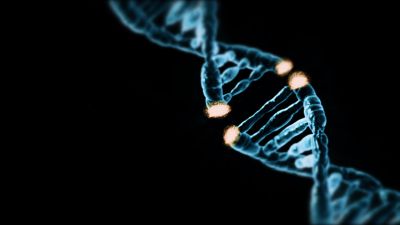
Patent Office of the Republic of Poland decided to grant patent, titled ‘Radiosensybilizator do zastosowania w radioterapii.’ (Radiosensitizer to be applied in radiotherapy) to researchers from the Faculty of Chemistry of the University of Gdańsk. It will allow improving the efficiency of radiotherapy and minimizing its negative effects.
Radiotherapy is one of the leading treatments for hard tumor cancers. Ionizing radiation, used in radiotherapy, unfortunately causes multiple side effects and complications. For that reason improving the efficiency of radiotherapy and minimizing its negative effects are in high demand.
- This problem might be solved by applying radiosensitizers – chemical compounds that sensitize cancer cells to ionizing radiation. The final outcome of applying a sensitizer is damaging the DNA, leading to the death of cancer cells – says prof. dr hab. Janusz Rak from the Department of Physical Chemistry of the Faculty of Chemistry of the University of Gdańsk – the invention concerns a medical application of ISdU, i.e. 5-Iodo-4-tio-2′-deoxyuridine as radiosensitizer. This compound is a chemical modification of nucleoside (2'-deoxyribose), a natural ‘building block’ used to by the body to synthesize RNA. Because of only minor change in molecule structure, enzymatic cell systems preparing native nucleosides and incorporating it to the DNA, during biosynthesis or during repair, do not ‘see’ the artificial structural changes and take ISdU for a native thymidine. Research findings, clonogenic assays in particular, specifying the rate of proliferation renewal after the exposure of cell colonies to specific dose of ionizing radiation, confirmed that ISdU significantly sensitizes breast cancer cells.
The significance of the invention has to be highlighted, especially in the context of reducing radiation doses, and the resulting radiological protection of healthy tissue.
- Not only does ISdU improve the efficiency of radiotherapy but allows reducing therapy radiation doses, which means better radiological protection of healthy tissue – adds prof. dr hab. Janusz Rak. – the compound causes single-strand DNA breaks after adding solvated electron created by water radiolysis to it (the main component of living cells). The ionizing radiation causes formation of the same amount of hydrated electrons (e—hyd) inside body cells, as the most genotoxic hydroxyl radicals, although joined with native DNA does not cause any negative effects. Only after the double helix ISdU sensitizes the DNA to the e—hyd. . It is worth stressing that ISdU works in anaerobic conditions (state of hypoxia), which lessen the harm of ionizing radiation on one hand, on the other hand characterize 80% of hard tumor cancers. Clinical application of ISdU should lead to the increased radiological protection and radiotherapy’s efficiency in hypoxia conditions. The next research stage, preceding clinical trials, is animal model testing, scheduled for next year.
The patent was developed by the team of researchers from the Department of Physical Chemistry of the University of Gdańsk, comprising: prof. dr hab. Janusz Rak, dr inż. Witold Kozak, dr Samanta Romanowska, dr Magdalena Zdrowowicz -Żamojć and Paulina Spisz.
The developed method may improve the effectiveness of radiotherapy but also alleviate patients’ side effects.
Translation: Adam Myzyk
